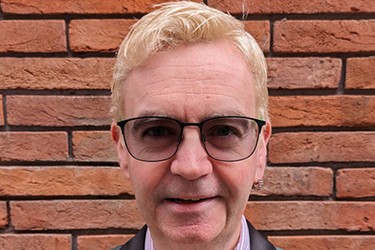No Surprise: Patient Recruitment Still Sucks

By Dan Schell, Chief Editor, Clinical Leader

One of the most common statistics people use when talking about patient recruitment is that more than 80% of trials fail to enroll on time. The source of that stat is a 2020 Perspectives In Clinical Research article that, in turn, lists its source as a 2012 Clinical Trials Arena article. If you know of a more current metric, let me know, but for now, let’s just assume patient recruitment is still a big cause of trial delays and increased costs.
I wanted to talk with someone who specializes in patient recruitment, so I turned to a guy I’ve frequently seen on LinkedIN who posts videos of himself looking dapper with his button-down shirt and tie talking about patient recruitment (among other topics). If that wasn’t enough, his LinkedIN profile description says, “Literally The Man Who Wrote the Book(s) on Patient Recruitment.”
Ross Jackson is known for his digital outreach recruitment efforts, specifically those that involve Facebook. I wasn’t surprised, though, when he told me, “There’s no magic wand or perfect solution to patient recruitment.” He says usually if he’s brought in, the trial is in some sort of rescue situation. What caused the problem? Probably, just sticking with the status quo. For example, sponsors or CROs often select the same sites over and over, despite traditional low enrollment numbers. “They must know these kinds of actions are only going to delay the trial, or at the very least, the trial’s not going to go as smoothly as they say it will,“ Jackson says. “This is a big problem with the industry. If everyone was transparent in the first place, the whole process might be a bit better.”
I’m guessing an industrywide revamp is probably not in the cards, so I wanted to know if he could recommend something that can be done right now to help improve the dismal recruitment rates that plague the industry. Since Facebook is his bailiwick, I thought I’d start there and see if this platform “for old people” — as my kids would say — still has legs or if some newfangled social upstart is the cool place to be.
“With the integration of Facebook and Instagram, you're covering a very wide range of the population. I never found Instagram to be that brilliant for driving patient referrals, but Facebook is very good,” he says. The inherent socialization aspect of Facebook remains its biggest draw, with members feeling comfortable sharing with family members and friends, for example, an ad touting a certain disease-state trial. Since COVID, there has been a crackdown on protecting the privacy of members, so you can no longer target people on Facebook based on health-related interests. Jackson says there’s ongoing debates in the industry as to if this kind of interest- or behavioral-targeting was any good in the first place. “Facebook's got so much better, and it has so much more information now,” Jackson says. “If you set up your campaign the right way and target the right sort of conversion [i.e., person clicks ad, goes to landing page and fills our prescreener], Facebook’s algorithm can really narrow down the list of people you want and continuously adjust based on your criteria. I’ve worked ion some campaigns where the conversion rate is high as 20% while others are very low.”
THERE ARE NO SIMPLE SOLUTIONS
In an ideal world, Jackson believes the patient recruitment problem could be alleviated — maybe not eliminated — if PCPs would more frequently recommend patients participate in trials. Of course, it’s not that easy. They have limited time to talk to patients, much less about clinical trials, which they may not even be well versed in. The patient is also likely overwhelmed with handling their diagnosis and can’t process any more information, especially regarding something that will require more of their time and offers no guaranteed benefit.
A lot of sponsors and CROs target patient advocacy and community groups to help with recruitment, but Jackson says that often backfires since these groups view the pharma company’s intention as simply using them for their database, and not providing any long-term benefits to their clientele. “You have to prove you’re in it for the long haul and show them that you’re going to focus on helping people with a certain condition for 10-20 years.”
Jackson’s big on promoting relationship building and mutual respect in the industry, which admittedly, would sound a bit wishy-washy if it wasn’t coming from someone with so much patient recruitment experience. But, he’s seen what works, and what doesn’t; and he’s got the experience to back up his suggestions.
As for patient retention — the ying to patient recruitment’s yang — Jackson also has some suggestions. But for that conversation, you’ need to watch the video portion of our interview here.
